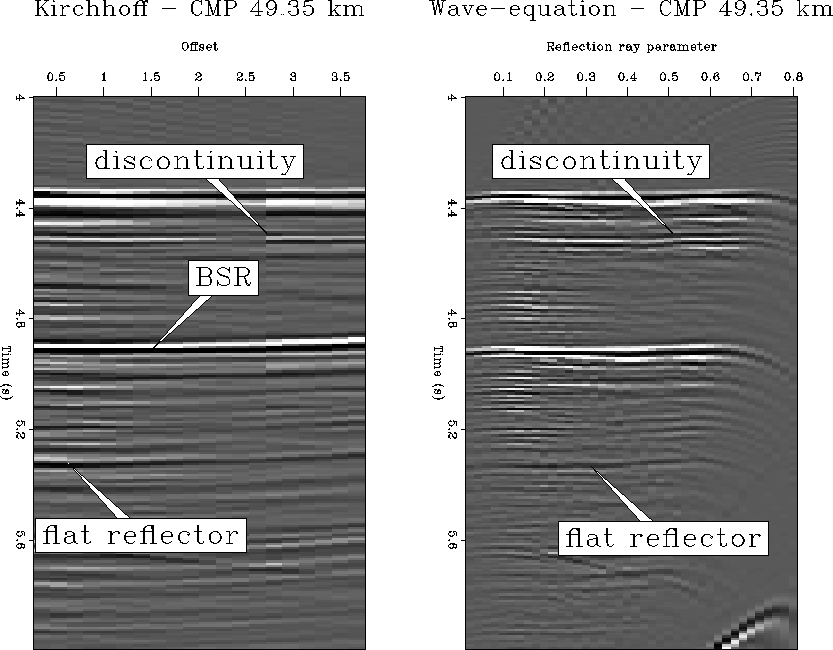




Next: Discussion and future work
Up: Sinha & Biondi: Comparing
Previous: Introduction
Although the goal of both Kirchhoff and wave-equation migration is to
properly image the subsurface, they differ in many ways. The first difference
is that the two migrations are in separate domains. The Kirchhoff migration is in the offset domain and the wave-equation migration is in the angle domain Prucha et al. (1999).
The stacked section obtained by Kirchhoff migration is shown in
Figure 3. It shows the BSR quite clearly and also images a
relatively flat reflector beneath the BSR which seems to fade as it
approaches the BSR and completely vanishes near the BSR. The same section after wave-equation migration (Figure 4) also images the BSR
equally well but better resolves the reflector below the BSR. It is continuous
and cuts across the BSR. Though the energy of the reflection still decreases
towards the BSR it does not vanish. The latter image has a higher frequency
content which shows up as the sharpness of the reflectors.
Constant image gathers are then compared to observe the accuracy of the two methods in resolving the BSR from
the layer below.
Figure 2 shows the two image gathers at a large distance from the crossing of the BSR with the flat layer. The results are qualitatively similar including the discontinuity in the reflectors. This discontinuity results because of the acquisition geometry, the near offset being double the far offset. It has spread out on the reflection angle gather so is faintly visible there. Figures 5 and 6 are at CMPs 37.5 km and 33.5 km respectively,
where the lateral velocity variation is stronger, the wave-equation migration
clearly resolves the two reflectors whereas the lower layer vanishes
for the Kirchhoff migration.
AVO-49.35-ann
Figure 2 Common midpoint gather at 49.35 km.










Next: Discussion and future work
Up: Sinha & Biondi: Comparing
Previous: Introduction
Stanford Exploration Project
4/20/1999

